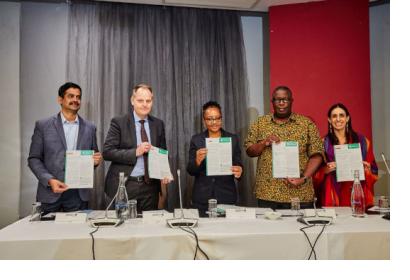Zambia is a drought-prone country that experiences droughts every 4 to 5 years. This frequency is projected to increase due to climate change. The inadequate infrastructure together with the rural and poor population makes the country highly vulnerable to droughts. However, Zambia is now better prepared to cope with droughts’ impacts thanks to a new satellite-based online weather-monitoring system, the Zambia Drouth Monitoring System (ZADMS), that was launched on 20 February in Lusaka, Zambia. The ZADMS, developed by the International Water Management Institute (IWMI) for Zambia’s Ministry of Agriculture, is part of the CGIAR Initiative on Climate Resilience (ClimBeR) and the program Accelerating the Impact of CGIAR Climate Research for Africa (AICCRA) and involves the collaboration of several organizations.
ZADMS is developed principally for drought risk mitigation and to enable timely action by government authorities and development organizations. It overcomes the challenges of locating, accessing and processing data by providing all data for monitoring and managing drought through a single portal. The portal is freely accessible to all and presents several sub-modules, such as Weather Forecast, Drought Management, Drought Decision Support, Public API, Online Bulletin, Newsfeed, and a User Guide. The system ensures easy-to-interpret on-screen maps that can be exported as user-friendly drought bulletins.
As IWMI’s Director General expressed, “While ZADMS can’t change the weather, it can help the Zambian government to make informed decisions and help them deliver the information that farmers need to cope. (…) For example, with a drought looming, ministers might decide to import extra food or prepare plans for providing supplementary irrigation to farmers, helping to make the nation more resilient to climate shocks.”
Main article image: Zambia’s Ministry of Agriculture Acting Permanent Secretary Mrs Peggy Mlewa officially launched the ZADMS platform and technical brief. ©IWMI

